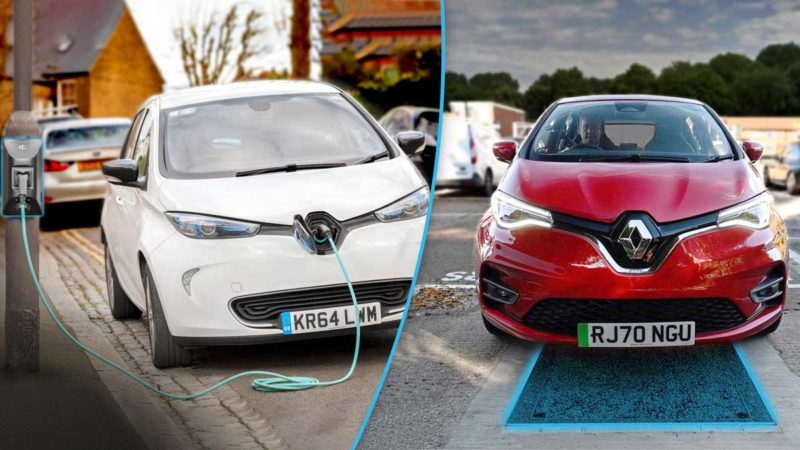British pioneer of on-street EV residential charging Char.gy has begun a “world-first” public EV inductive charging trial that will complement the company’s lamp post-embedded EV charging stations as a second technology route for electric car owners.
Inductive charging has the potential to revolutionise the way electric vehicles charge and could serve as a massive step change for the EV industry as a whole, if it can prove its credentials on cost and efficiency.
Instead of requiring a cable and a standalone charging station, inductive charging is done wirelessly thanks to an inductive charging pad installed in the road surface and an induction charging pad installed in the EV – whether as original equipment or a subsequent retrofit.
The trial underway in Marlow in the south east of England uses a low-power inductive charging installation provided by technology partner IPT Technology.
Adapted vehicles available for public hire through the hiyacar.co.uk app and website complete the second half of the trial, and members of the public have been invited to hire the adapted EV for periods of up to three days to provide feedback.
“Our business has really focused on use-cases where charging solutions are complicated,” said Myles Roberts, Char.gy’s project manager for inductive charging.
“Inductive charging takes another step towards making on-street charging in urban contexts the de facto solution for people without off-street parking who want an EV; so we’re delighted to have successfully concluded the first trial of the technology ‘in the wild’.”
Char.gy has pioneered EV charging in densely populated city centres such as London, where a lack of residential driveway or garage parking means at-home EV charging can be troublesome, at best.
To meet the growing demand for public EV chargers in residential areas – demand that continues to grow with the introduction of Ultra Low Emission Zones (ULEZ) – Char.gy developed a technology that adapts kerbside lamp posts into EV charge points.
Lamp posts are already ubiquitous in residential areas and deploying traditional EV charging infrastructure serves a significant challenge. Char.gy’s adaptation of existing residential infrastructure to expand EV charging in urban areas presents countless opportunities for expansion and deployment around the globe.
These technologies, both adapted lamp posts and inductive charging, are further vital in dense residential areas around the city centre where EV uptake is tied with decreasing pollution levels that can lead to devastating health impacts.
Char.gy’s development of inductive charging only serves to further streamline solutions for urban on-street parking, helping to declutter the kerbsides and provide a solution accessible for all EV drivers. Instead of needing to carry a charging cable or navigate different connections, all a driver with an inductive-capable EV need to do is pull up over an induction pad.
Similarly, removing EV charging cabling removes trip hazards for pedestrians while also helping drivers who are less mobile, elderly, or disabled, having to navigate kerb drops between road and pavement.
“The trial of inductive charging in Marlow really provided a sense of what the near future will look like,” said Councillor Peter Strachan, cabinet member for climate change and environment at Buckinghamshire Council, where the trial is being held.
“As a typical local authority looking to incentivise the adoption of EVs, managing the street scene and accommodating a wide variety of needs and preferences on our residential roads and pavements has – until now – proven to be very challenging.
“Inductive charging solves a great many of the problems and looks like a clear contender for how we organise our clean power infrastructure in the best interests of all of our residents.”
Joshua S. Hill is a Melbourne-based journalist who has been writing about climate change, clean technology, and electric vehicles for over 15 years. He has been reporting on electric vehicles and clean technologies for Renew Economy and The Driven since 2012. His preferred mode of transport is his feet.


